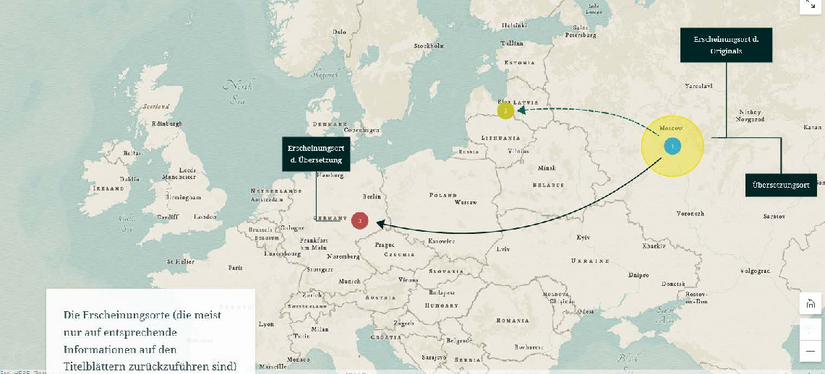storymap
Classic visualizations usually consist of static representations that allow no or only very limited interaction. Thus they are mostly dependent on a contextualization in written or auditory form. Storymaps are one way to overcome this situation. These are Internet-based applications that combine maps with other modal forms of representation. They allow a dynamic representation of complex issues, which is why they appeal not only to interested laypersons but also to experts.
The following storymap explores the question "How Russian literature came to Europe in the 18th century?" and, in addition to the topographical location of the transfer of knowledge, includes a range of further information as well as links to original editions, databases and further reading.
Citation style:
Hofeneder, Philipp (2021) Storymap: "How did Russian literature come to Europe in the 18th century?". Historical translation phenomena and their places of action," https://storymaps.arcgis.com/stories/e0fd01b5e3924c26822f48de4d13e4ab
Bibliography:
- Hofeneder, Philipp (2018) "Übersetzer als translatorisch handelndes Kollektiv. Reflections on a Concept of Translation using the Russian Tsarist Empire as an Example," in Tashinskiy, Aleksey, Boguna, Julija (eds.) Das WIE des Übersetzens, Berlin: Frank&Timme, 127-146 [URL here ].
- Hofeneder, Philipp (2016) "The Long 'Shadow' of Imperial Historiography. Karamzin's "History of the Russian Empire" in Translations," Journal of East Central European Studies 65(4), 507-530 [URL here ].
